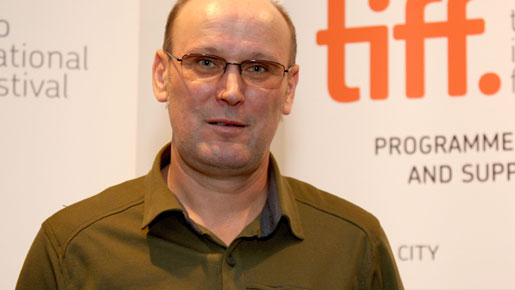
The large rectangular exhibition space will be divided into five zones and furnished with exercise equipment such as weights, stretching mats and fitness balls to create an atmosphere reminiscent of a modern gym. At the heart of the installation will be Dabernig’s latest film, also called excursus on fitness (2010) [sic], a 12-minute exploration of the role of exercise in our postmodern society.
Dabernig, an internationally recognised avant-garde filmmaker – his short Hotel Roccalba (2008) was screened at last year’s BFI London Film Festival – began his career as a visual artist working mainly with sculpture. Although trained in figurative sculpture he made work that took its inspiration from mathematics and architecture. He describes the sculptures from that period of his career as ‘very structural’ and stresses the hermetic nature of his output: ‘I tried to avoid any subjective connotations’.
But then in 1994 Dabernig came to filmmaking ‘more or less by coincidence’ and found himself lured by the narrative potential of the medium. The films he has made since then, although not narrative in the sense of being plot-driven, present characters whose lives are lived outside the confines of the work and suggest stories the viewer is invited to consider, but not necessarily understand.
Excursus on Fitness, the new film at the centre of the MAK show, like the majority of Dabernig’s movies, stars the artist himself, friends and members of his family. These films, which often address issues close to Dabernig’s own life, appear totally divorced from what MAK curator Bärbel Vischer calls the ‘reduced aesthetic’ of his sculptural work, but the artist is quick to point out the evolution of his practice.
‘Fifteen years of research in formal concentration – of competing in a very structural sense – this is included in my movies. In general I start with the space and develop the story with the space as with a three-dimensional structure. Every shot is written down in advance so the movie isn’t something that just happens; I’m not approaching it like a flâneur. It’s narrative, but still connected a great deal with structure.’
This new film, which Dabernig was making final cuts to at the time of our interview, is set in a sports centre and features six actors carrying out basic exercises. The characters however appear ‘not very engaged’ in what they are doing. They are at odds with the pristine paraphernalia of modern fitness culture in the gallery, including the flat screen monitor on which the film is being shown, which evokes the banks of MTV-blaring screens found in twenty-first century gyms.
The point Dabernig is making with this installation concerns the way in which sport and exercise now no longer perform merely the functional salutary and social roles they have played for generations, but have been co-opted as lifestyle signifiers, ‘mirror[s] of our free economy’.
Excursus on Fitness is a silent film, but an external soundtrack will be created by the meeting of sound from two sources at opposite ends of the gallery space. The first, which greets visitors as they enter the installation, is the chill-out style music of Austrian symphonic composer Gandalf. The second is the soundtrack to Parking (2003) – another film of Dabernig’s that’s being screened at the far end of the space – which comprises the engine noise of a stationary car. ‘These are sounds that are absolutely not right for each other’, the artist explains. ‘I try to work with dialectics, ambiguities, to subvert these fancy, neo-liberal connotations of fitness, to break it down on an ironic level’.
The final aspect of the installation is a series of photographs from Dabernig’s archive that presents a mundane and unpolished world of fitness very much at odds with that pressed upon us by postmodern celebrity culture. ‘I made a selection of 14 photographs connected to sports and the motifs do not relate to our [contemporary] cultural standard of fitness. Sport was degenerating from a former social function towards pure physical and economic representation’, he says.
Dabernig is very clear in his thinking about the role that fitness plays in our society’s representation of itself, but he in no way wishes to be didactic in his exploration of these issues. ‘I do not want to explain to anybody how he should take this installation. It should somehow be clear but in general I think an art piece should create something in your head and not give you an answer.’
Excursus on Fitness is at MAK Gallery, Vienna, from 7 April to 12 September. http://www.mak.at

